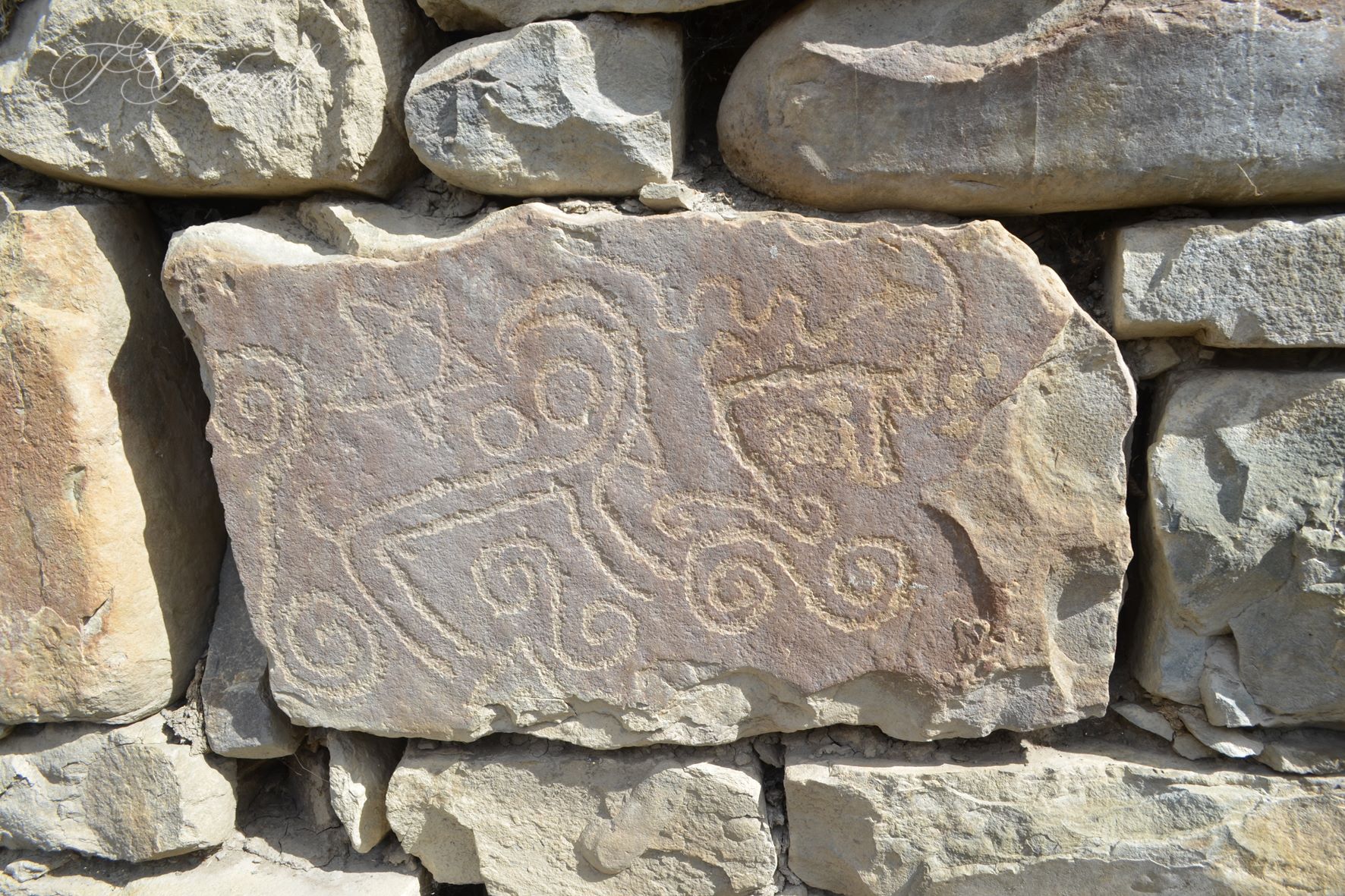In a follow-up to the article “Photographs from Ancient Kahib, Daghestan in the Caucasus” (April 2015), four additional images of Kahib by Gebek Gebekov have been forwarded by Guseyn Guseynov to Kavehfarrokh.com. The April 2015 on Kahib had featured photographs provided by Guseyn Guseynov to Kavehfarrokh.com.
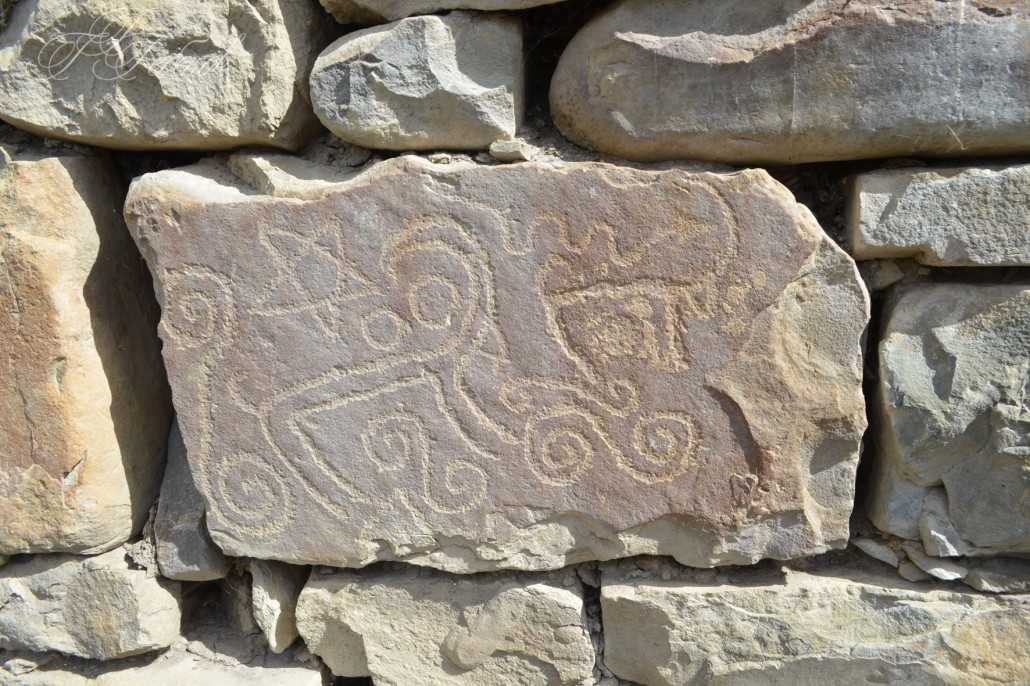
Spiral motifs along with what appear to ram-type animals; note the five-pointed star (Source: Gebek Gebekov to Guseyn Guseynov & forwarded to Kavehfarrokh.com). There also appears to be a partially depicted triskele symbol.
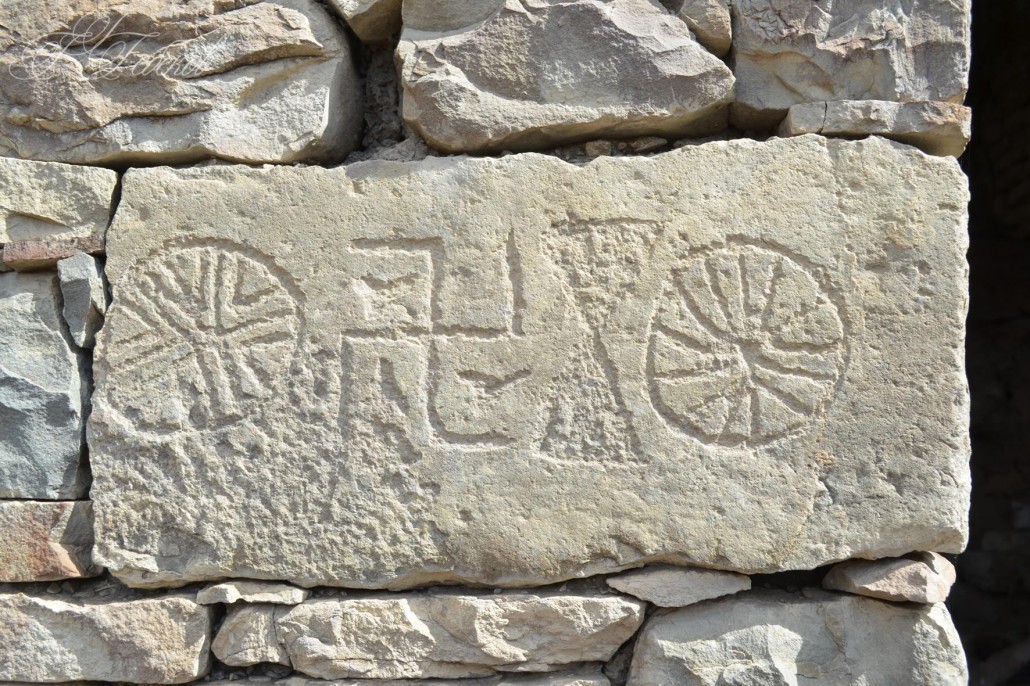
Left to right: circle inset with lines/bars set in five directions (perhaps denoting an anthropomorphic entity), swastika type symbol, “hour glass” motif figure, circle with bars, perhaps indicating a spoke-wheel of some kind or possibly a mystical/religious symbol (Source: Gebek Gebekov to Guseyn Guseynov & forwarded to Kavehfarrokh.com). The Swastika is a very ancient symbol and can be found in several ancient cultures such as the Indus Valley of ancient India, and in the pre Indo-European Minoan pottery of ancient Crete. Unfortunately the swastika symbol was (mis-)appropriated by Eurocentric Nazi racialists in the 20th century for nefarious, racialist and destructive purposes.
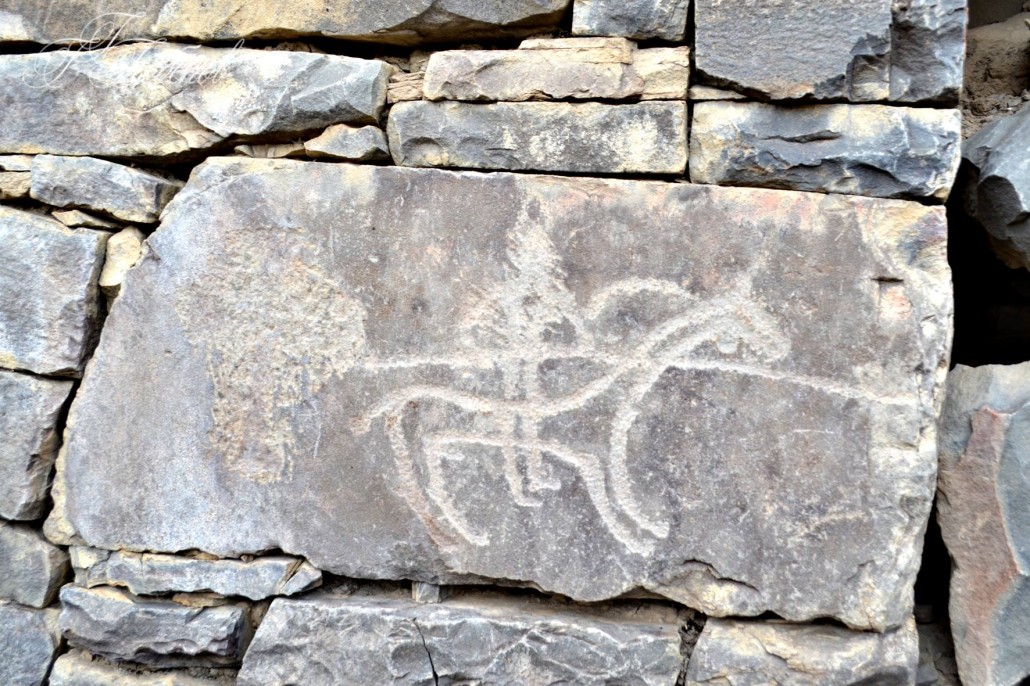
Depiction of a horseman with a long lance; perhaps an allusion to the ancient Scyths, Alans and Sarmatians whose cultural legacy influenced the ancient Caucasus (Source: Gebek Gebekov to Guseyn Guseynov & forwarded to Kavehfarrokh.com).
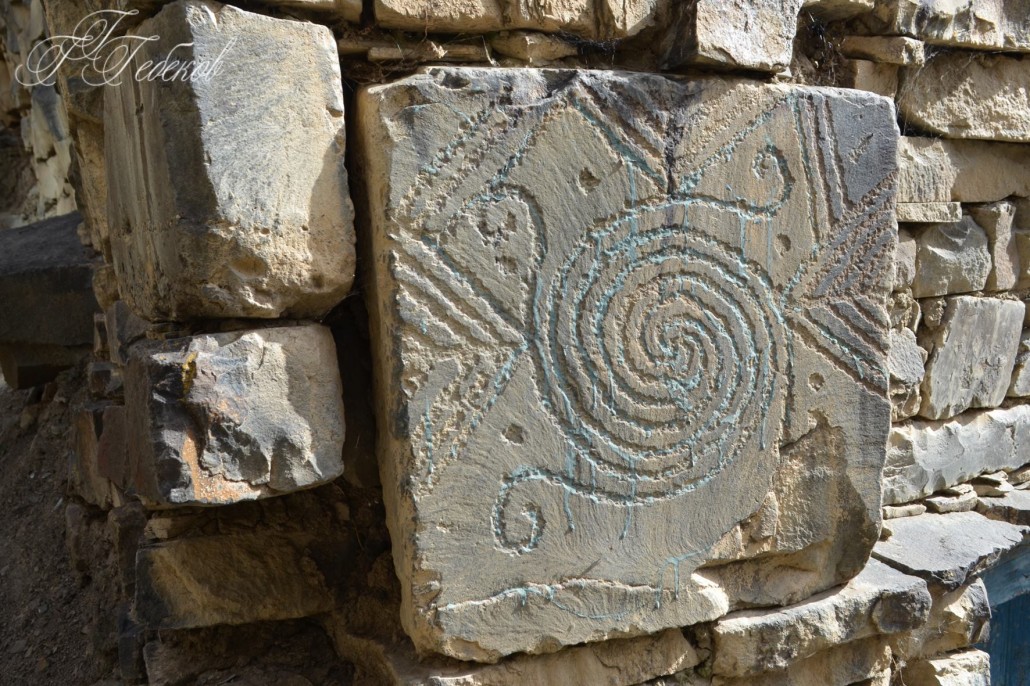
Spiral pattern with chevron designs pointing to it from its top, left and right (Source: Gebek Gebekov to Guseyn Guseynov & forwarded to Kavehfarrokh.com).

